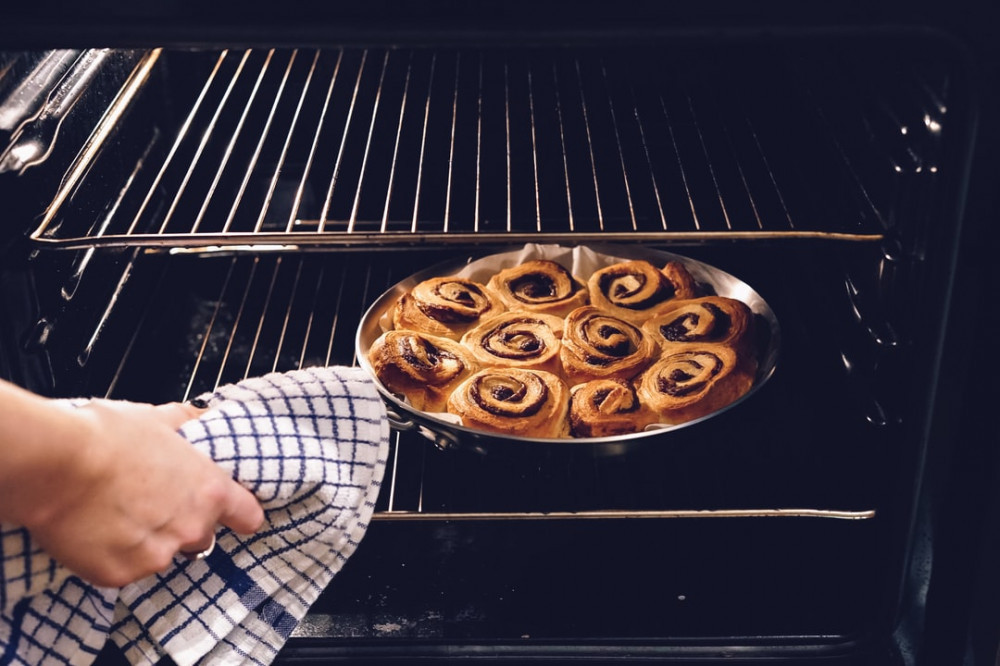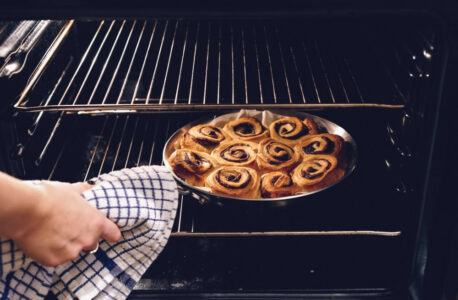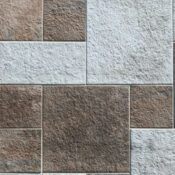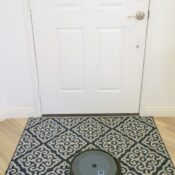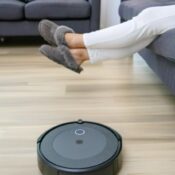As we all know, an oven is a heavily used appliance in a home, that is basically used on a daily basis.
We are all too familiar with the steak drippings, sauces that bubbled over, oil splattering, gooey cheese that long since burnt and all other spills and splatters that somehow find place in our ovens.
However, what we tend to do is after closing the oven door, is just forget about the whole mess. But then every time we open it again, we firmly resolve to clean it next week, and next week becomes next month, and this cycle continues until we finally get to it.
The problem is, that the longer you leave stains on the oven, the harder it will be for you to clean it!
Besides for the ugly look your oven has, failure to clean an oven can lead to poor oven performance with clogged filters and temperature issues. Continuous cooking with a dirty oven can also lead to a fire hazard caused by carbon based fumes and excess smoke.
We Are Here To Help You!
Cleaning an oven should not be your worst household chore. We researched the best tried and true methods on how to clean your dirty oven, so that you could get your oven nice and sparkly again, and know exactly what to do in order to keep it clean.
How Often Should My Oven Be Cleaned?
The best way to avoid grease and food buildup in your oven is to clean it after every use, such as removing food spillage as soon as you see it.
Generally, your oven should be thoroughly cleaned every two to twelve weeks, depending on how often and how much your oven is used.
For example if you have a family of kids and cook large family dinners you should clean it every couple of weeks.
Natural Remedies To Clean Your Oven:
Method 1: Baking Soda and Vinegar
Baking soda and vinegar are one of the best natural cleaning agents, that give you great results without compromising on your health.
Materials Needed:
– 1/2 Cup Baking Soda
– Approximately 3 Tablespoons of Water
– Empty Spray Bottle
– Distilled White Vinegar
– Dish Cloth
– Spatula (plastic/silicone
The Process:
Remove your oven racks and anything else you might have in your oven, such as oven thermometers.
In a bowl, combine the Baking Soda and water to form a thick paste.
Using a spatula, a gloved hand or cloth smear your paste all over your dirty oven parts.
Let the paste sit for around 15 to 20 minutes for a quick clean. For best results, let the paste sit overnight before continuing the process. After said time, wipe away the paste with a damp dish cloth.
Fill your spray bottle 3/4 with water and 1/4 with vinegar. Spray the entire oven interior, especially on any leftover baking soda paste. The vinegar will react with the baking soda, causing it to foam so you could easily wipe it off.
Finally, wipe your oven down with a warm wet cloth, or wet towel papers.
Your oven interior should now be sparkling clean.
Clean your Oven Racks:
Sprinkle baking soda on your oven racks, then pour vinegar over the baking soda.
Once the foaming stops, cover the racks with hot water. The Best place to let it sit is in the bathtub, so you have enough place for all racks.
Let it sit overnight.
In the morning, scrub your racks with a scrub brush or old toothbrush to remove any remaining grease or grime.
Give your racks a thorough rinse with warm water before drying it and placing it back into your oven.
Method 2: Vinegar and Cornstarch
Materials Needed:
– Pot
– 1 Cup Distilled White Vinegar
– 1 Tablespoon Cornstarch
The Process:
Mix the Vinegar and Cornstarch in a pot, and heat on your stove until it thickens. Then allow it to cool until it’s room temperature.
With a cloth or gloved hand, apply the mixture to your oven door and inside of your oven, and let it sit for 15 to 20 minutes.
After letting it sit, wipe your oven down with a warm cloth to rinse.
Method 3: Spot Treating With Salt And Baking Soda
Have food spills or spots in your oven, but don’t want to do a full cleaning?
Materials Needed:
– Empty Spray Bottle
– 1/3 Cup of Table Salt
– 1 Cup Baking Soda
In a small bowl, combine the salt and baking soda. Fill your empty spray bottle with water, and liberally spray over your stains. Then, sprinkle your salt and baking soda over the water, and spray with water over the baking soda mixture. Allow it to sit overnight.
In the morning, wipe up the loosened baking soda and water, and wash with hot soapy water to rinse.
Self Clean Your Oven:
Many modern ovens come with a self clean feature which is a very time saving and convenient way of cleaning your oven.
However, self-cleaning your oven has many pros and cons. While it’s easy, efficient and requires almost no cleaning from your end, the high temperature of it can cause damage to your oven parts such as the locking mechanism, thermostat and wires.
Experts suggest that you should aim not to self clean your oven more than 5 times a year, or when it’s heavily soiled.
During the self-cleaning cycle the oven is heated to around 900 degrees Fahrenheit causing food inside your oven to decompose leaving behind small pieces of ash. The leftover ash could simply be wiped up with a damp cloth once the cycle has finished.
What you should know about self-cleaning:
Make sure to remove any oven liner before starting, as it could damage the enamel coating of your oven.
In some models you need to remove the oven racks as well, be sure to check your instruction Manuel about that.
Make sure to stay home while your cycle runs just in case anything goes awry.
Store Bought Cleaning Products:
Using a store bought oven cleaner is quite an easy and fast way to get rid of serious grease and grime.
However, these cleaners can be caustic with all these chemicals and fumes in them. If you are sensitive to these chemicals, or prefer cleaning your house all naturally, choose one of our above mentioned natural cleaning methods.
The Process:
Before starting, make sure to put on your rubber gloves to avoid direct contact with your cleaner.
Remove your oven racks, pans or anything else you may have in your oven.
Lay paper towels, or an old towel underneath your oven in case some cleaner gets sprayed out of your oven.
Spray the oven cleaner all over the inside of your oven, making sure to cover the back, sides, bottom, top, door and the corners. Once it’s all covered, close your oven.
When spraying make sure not to spray on the heating elements, or where the gas comes through.
Let it sit for the amount of time indicated on label of your cleaner. (most cleaners need between 20 and 30 minutes).
Spread garbage bags on your counter and place your oven racks on it. Make sure it is well covered by garbage bags underneath the racks to avoid spray getting onto your counter.
Spray your front and back of your racks with the cleaner, and place onto the garbage bags. (if the smell bothers you, cover your racks with garbage bags on top as well) and let it sit for around 20 to 30 minutes as well.
After said time, take a damp cloth rag, open your oven and wipe all surfaces well. For sticky spots, food residue or grease, use a steel wool pad, scouring pumice or microfiber sponge to scrub off.
Make sure to wash your oven well a couple of times to get rid of any remaining traces of dirt or cleaner.
Place your racks into your sink and rinse well with hot soapy water, using a steel wool pad, scouring pumice or microfiber sponge to get rid of any remaining grease, grime, or crusted on chunks of food.
You should now have a sparkly, clean oven!
How To Keep Your Oven Clean
Here are some great tips to keep your oven clean, so that you don’t need to spend so much time cleaning your oven.
Line it: Line the bottom of your oven with a piece of foil, or one of these special non-stick oven liners that come in all sizes to fit your exact oven dimensions. In the event of food drippings, only your liner will get dirty, and you stay with your clean oven!
Don’t check food in the oven: When checking on your food halfway through cooking, always remove the tray from the oven, rather than prodding around with a fork. This will avoid food drippings while mixing or taking out the dirty utensil used from the oven.
Use roasting bags: Roasting bags are great for meat, fish and vegetables. This will ensure no spills or splatters while roasting your food.
Cleaning your oven should not be your most dreaded task! We hope this article helps you in cleaning your oven the right way as well as keeping it clean so that you could have the best cooking experience in your spotless clean oven.
